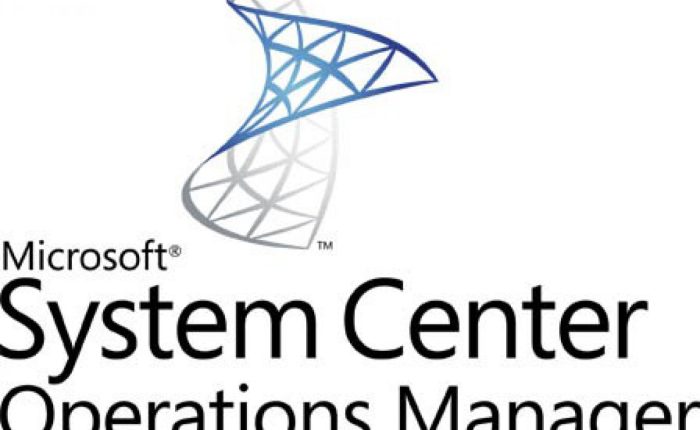SCOM 2019 UR4 is here, more information can be found on https://support.microsoft.com/en-us/topic/update-rollup-4-for-system-center-operations-manager-2019-07ad0ef3-a330-4373-92f6-2dda3821bee or read below:
Download Update Rollup 4 for Microsoft System Center 2019
Install the update in the following order:
Management Servers
Web Console Servers
Gateway Servers
Operations Console Servers
Reporting Server
Apply Agent Updates
Update UNIX/Linux management packs and agents
Updated UNIX/Linux management packs can be found here
Improvements
- Support for Windows 11
- Enabled .NET4.8 support
- UI improvements in Operations console:
- Support for sort option by column, in Overrides Summary.
- For Monitors, Rules, Task and Discoveries, Management Pack label text is selectable in the workflow Properties window.
- Added new fields for Class Technical Name in the State Views. Added the same in the wizard for creating a new Alert, Event, Performance or State View.
- Added Target Class Display Name to help identify the target of a rule while selecting rules during the creation of a new Performance View.
- Added 3 new columns Management Pack, Sealed and Members in the Authoring pane > Groups.
- Added new column for Management Pack Display Name in the Authoring pane > Create Group wizard.
Issues that are fixed
Operations Manager 2019 Update Rollup 4 includes fixes for the following issues:
Operations Console
- Get-SCOMGroup CmdLet in PowerShell not reflecting the updated name of a group .
- Edited alert properties in the alert views not being reflected sometimes without switching views.
- The Reason and/or Comment field not being updated correctly in an existing maintenance mode schedule.
- Maintenance Mode Schedules fail to work when creating multiple schedules at once.
- Information around update rollup applied to Management Servers not being reflected correctly in the Ops console Admin view.
- MonitoringHost.exe process(es) crashes when a Management Server had neither Microsoft OLE DB Driver 18 for SQL Server nor SQL Server 2012 Native client 11.0 installed.
- In high-load environments, when AlertUpdate data was put in the Pending send queue, there was an issue processing these and event 5204 would get logged which was causing the All-Management Resource Pool to go down.
- Updating an existing Console Task would automatically switch the Task Target (class) to System entity instead of the one that was initially selected.
- Edit an existing Active Directory Integration Failover Configuration when wanting to add or remove Management Servers in the Failover list.
- The MP Reference Alias generator is case-sensitive now and will create only unique Aliases for Management packs.
- The “Installed column” is now sortable in the Operations Manager product views.
Web Console
- Authentication failing in web console if password of the account used would contain the “:” character.
- New Dashboard Wizard in the web console would fail with MPInfra_p_ManagementPackInstall exception.
Other Fixes:
- Database Registry that was created for temporary usage after patch or upgrade installation in 2019UR3 is now being deleted.
- There was a special scenario where APM would crash IIS Application Pools when W3WP was trying to load any type of managed DLL which was built as 64bit. These types of DLLs will no longer cause APM to crash the IIS Application Pool.
- The Insecure Direct Object Reference Vulnerability issue related to APM websites
- SNMP Traps sent through a proxy would not be received.
- Network discovery failure for network devices with HSRP that do not have the AF_NET IP address.
- Generic event reports coming up empty for events generated by SNMP devices.
- SDK service not being able to reconnect to SQL after a long SQL AG failover.
Performance improvements:
- Optimized the table indexes to improve record insertion rate.
- Added indices to 2 Data Warehouse tables to improve performance.
- Included Date and time information for Performance Data collected by PowerShell scripts.
- The PerformanceRuleInstance table which was causing performance issues is now being groomed correctly.
- Improved performance of ACS report queries that are using the [dbo].[spInsertString] stored procedure .
Unix/Linux/Network monitoring fixes and changes:
- The counter name “% Free Space” has been changed to “Used Megabytes” in Linux RHEL 6 and RHEL 7 MP for accurate representation.
- Corrected the performance counter collected by “Used Megabytes” rules in RHEL 6 and 7 MPs.
- The file system statistics have been enhanced to match the data with Linux standard commands.
- Linux agent now uses SHA2 to encrypt for certificates.
- log rotate configuration files were getting deleted as part of Linux agent upgrade.
- OMI agent crash issue during log rotate.
- OMI logrotate SELinux module was getting uninstalled as part of Linux agent upgrade
- Memory corruption issue that would cause a crash of MonitoringHost.exe when it would fail to perform a SSH call to a Cross-Platform Agent has been fixed.
- ECDSA and ED25519 keys are now able to authenticate with Operations manager Console.
- Some JBOSS applications were not discovered from JEE MP.
- Fixed the /etc/opt/microsoft/scx/conf/scx-release file content for Oracle Linux
- Increased the limit to 128 words (from 64 words) for the filter associated with OMI WQL queries.
- Process monitoring related issues for Unix/Linux servers with a very large number of processes.
- Privilege escalation security issue related to Kerberos setup.
- Non-IP cluster resource (ex. Disk) getting discovered as an IPv6 resource.
- TLS 1.2 is now enabled by default for Linux agents.
- Cross platform DLLs hash mismatch is fixed.
- Linux Agent memory leak issue.
Previous fixes
In addition to these issues, all the issues that are fixed in SCOM 2016 UR10 and earlier update rollups for SCOM 2019 are also fixed in SCOM 2019 UR4.



